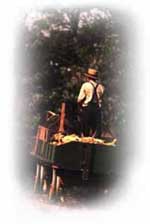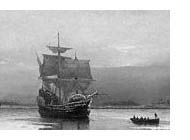|
Many early Anabaptists were put to death as heretics by both Catholics and Protestants, and others fled into the mountains of Switzerland and southern Germany. This is where the Amish traditions of agriculture, and of meeting in homes rather than churches, began.
 In 1693, a Swiss bishop named Jacob Amman broke from the Mennonite Church; his followers were called Amish. Although the two groups have split several times, they still share similar beliefs concerning baptism, non-violence, and basic Bible doctrines. They differ in matters of dress, technology, language, form of worship, and interpretation of the Bible. In 1693, a Swiss bishop named Jacob Amman broke from the Mennonite Church; his followers were called Amish. Although the two groups have split several times, they still share similar beliefs concerning baptism, non-violence, and basic Bible doctrines. They differ in matters of dress, technology, language, form of worship, and interpretation of the Bible.
Baptists
The Anabaptist movement didn't catch on well in England, but there was already a a tradition of Lollards and other groups who objected to such things as the robes worn by the priests, lavish music for worship, and the traditional liturgy.
Congregationalists began to organize churches independent of the state, comprised only of believers, with each church independent although linked in fellowship. The Baptists went further, saying that baptism was only for adults, as an expression of their faith in Christ, not for infants. On this, the Baptists and the Anabaptists agreed.
With the victory of Oliver Cromwell's Puritan forces in the English Revolution came a chance to experiment with a variety of religious expression, from the violent Fifth Monarchy Men and Fox's Quakers, to the Ranters.
King Charles I, who returned the monarchy to England, also brought about a reestablishment of the Church of England, and for a time dissent was persecuted, but it was eventually tolerated, then accepted as a British institution. Sects which were once illegal became mainstream, respectable denominations; the Presbyterians, the Congregationalists,  the Baptists, and the Society of Friends included. the Baptists, and the Society of Friends included.
The New World
The Puritans had a large influence in the New World. From the beginning of the 17th century, groups of persecuted Christians set out for America, hoping to find religious liberty and a new life. With their strong faith and practical drive, they helped to shape a thriving, moralistic society, one that fueled the energy of the modern United States of America.
|
